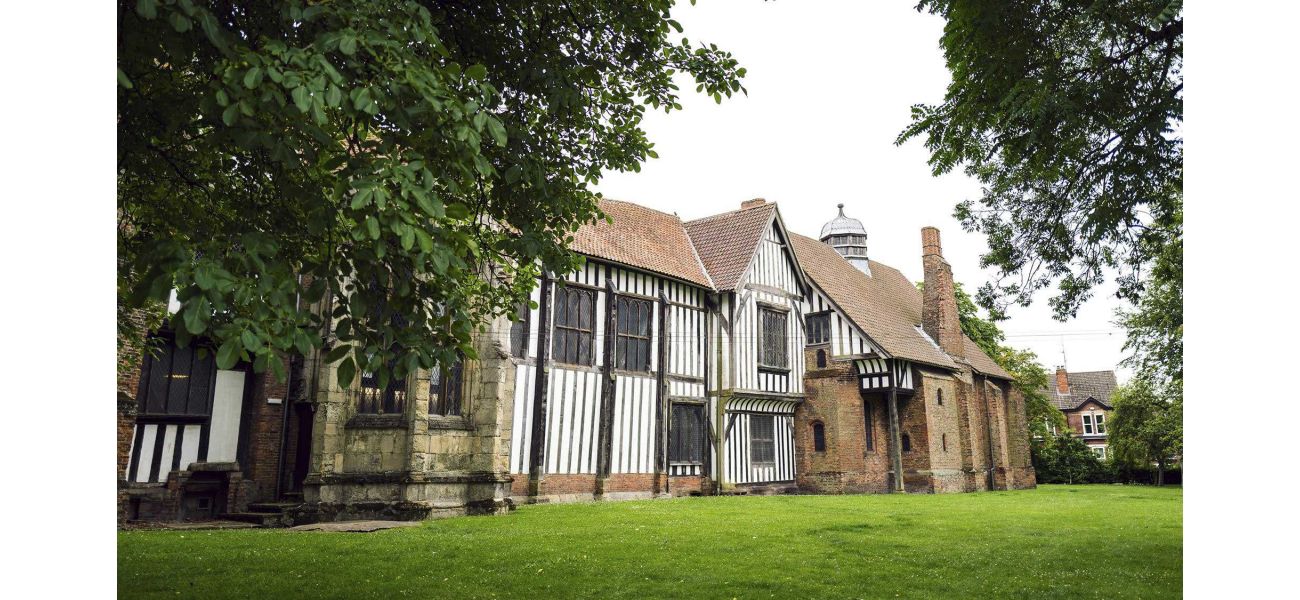Many witch marks discovered in Tudor house, an amazing find.
In a manor house visited by Henry VIII, an astonishing number of witches' marks were found on the walls.
October 29th 2024.

A remarkable discovery has been made at a Tudor property in England. The walls are adorned with a multitude of intricate carvings, known as apotropaic marks, that were believed to ward off evil spirits and provide protection. The news of this finding, fittingly announced just before Halloween, was shared by English Heritage, a charitable organization responsible for preserving numerous historic sites and structures.
The manor in question is Gainsborough Old Hall, located in the county of Lincolnshire. This magnificent estate has welcomed notable guests, including King Henry VIII and his then wife, Catherine Howard. As stated in a press release from English Heritage, it was their volunteer, Rick Berry, who spent two years meticulously mapping out approximately 20 of these markings throughout the grand building. Among the variety of designs, a significant concentration was discovered in the servants' wing of the hall.
These carvings range from simple circles to overlapping Vs, known as Marian marks, which are thought to invoke the protection of the Virgin Mary. One particularly interesting design is the pentangle, used to ward off evil forces. According to English Heritage, numerous protective symbols were found, but some were incomplete, leading to the belief that they may have faded over time or that the carver lacked the skill to complete them.
In an interview with CNN, an English Heritage spokesperson mentioned that one theory suggests these marks were created around the time when William Hickman owned the property in 1596. Interestingly, it was his name that was found written upside down, which is believed to have been a form of cursing someone during that time period. This finding is particularly intriguing as defacing someone's name to inflict harm was more commonly associated with the Roman and Anglo-Saxon era, and this is the first time it has been discovered at an English Heritage site.
The Old Hall has revealed even more secrets, as approximately 100 burn marks were also found. These were believed to offer protection against fires. The head of collections at English Heritage, Kevin Booth, expressed his amazement at the discovery, stating that despite the building's tumultuous history, which includes the ownership of William Hickman, it is still filled with mysteries.
The term "apotropaic" originates from the Greek word meaning "averting evil." These carvings are typically found etched into stone or wood, often near entrances, doors, windows, and fireplaces. Their purpose was to safeguard the inhabitants and visitors of a home from the malevolent intentions of witches and other dark forces.
This is not the first time such markings have been found in England. In 2019, a cave system in the East Midlands revealed hundreds of witches' marks. Similar carvings have also been discovered in houses built between 1550 and 1750. These were believed to ward off sickness, death, and ensure a bountiful harvest.
The significance of these apotropaic marks and the reason for their high concentration at Gainsborough Old Hall remain a mystery. However, this discovery serves as a reminder of the enduring presence and fascination with the supernatural in our history and culture.
The manor in question is Gainsborough Old Hall, located in the county of Lincolnshire. This magnificent estate has welcomed notable guests, including King Henry VIII and his then wife, Catherine Howard. As stated in a press release from English Heritage, it was their volunteer, Rick Berry, who spent two years meticulously mapping out approximately 20 of these markings throughout the grand building. Among the variety of designs, a significant concentration was discovered in the servants' wing of the hall.
These carvings range from simple circles to overlapping Vs, known as Marian marks, which are thought to invoke the protection of the Virgin Mary. One particularly interesting design is the pentangle, used to ward off evil forces. According to English Heritage, numerous protective symbols were found, but some were incomplete, leading to the belief that they may have faded over time or that the carver lacked the skill to complete them.
In an interview with CNN, an English Heritage spokesperson mentioned that one theory suggests these marks were created around the time when William Hickman owned the property in 1596. Interestingly, it was his name that was found written upside down, which is believed to have been a form of cursing someone during that time period. This finding is particularly intriguing as defacing someone's name to inflict harm was more commonly associated with the Roman and Anglo-Saxon era, and this is the first time it has been discovered at an English Heritage site.
The Old Hall has revealed even more secrets, as approximately 100 burn marks were also found. These were believed to offer protection against fires. The head of collections at English Heritage, Kevin Booth, expressed his amazement at the discovery, stating that despite the building's tumultuous history, which includes the ownership of William Hickman, it is still filled with mysteries.
The term "apotropaic" originates from the Greek word meaning "averting evil." These carvings are typically found etched into stone or wood, often near entrances, doors, windows, and fireplaces. Their purpose was to safeguard the inhabitants and visitors of a home from the malevolent intentions of witches and other dark forces.
This is not the first time such markings have been found in England. In 2019, a cave system in the East Midlands revealed hundreds of witches' marks. Similar carvings have also been discovered in houses built between 1550 and 1750. These were believed to ward off sickness, death, and ensure a bountiful harvest.
The significance of these apotropaic marks and the reason for their high concentration at Gainsborough Old Hall remain a mystery. However, this discovery serves as a reminder of the enduring presence and fascination with the supernatural in our history and culture.
[This article has been trending online recently and has been generated with AI. Your feed is customized.]
[Generative AI is experimental.]
0
0
Submit Comment





